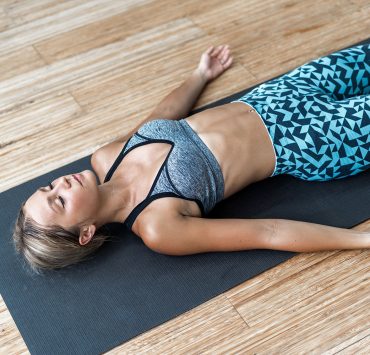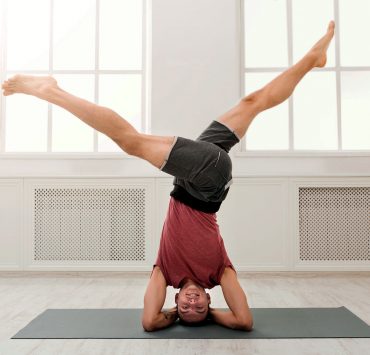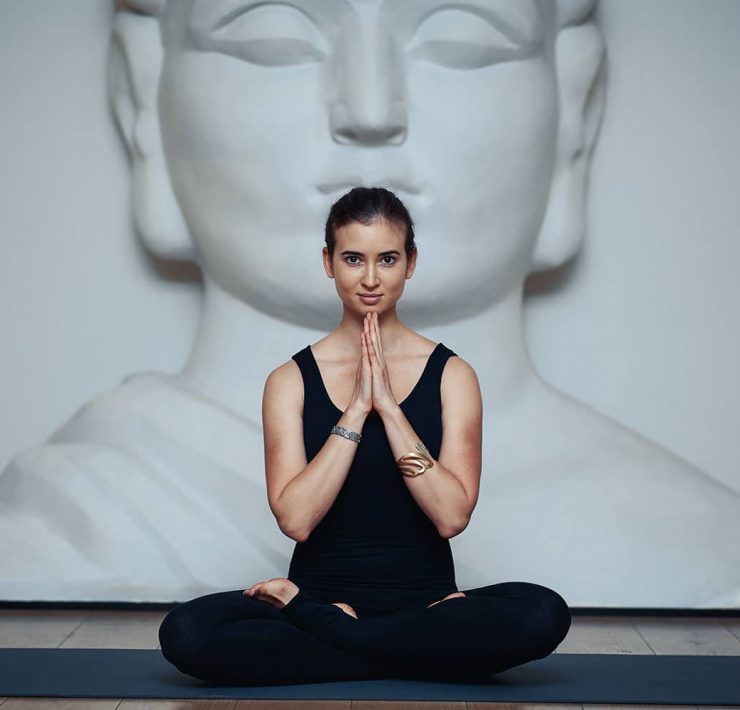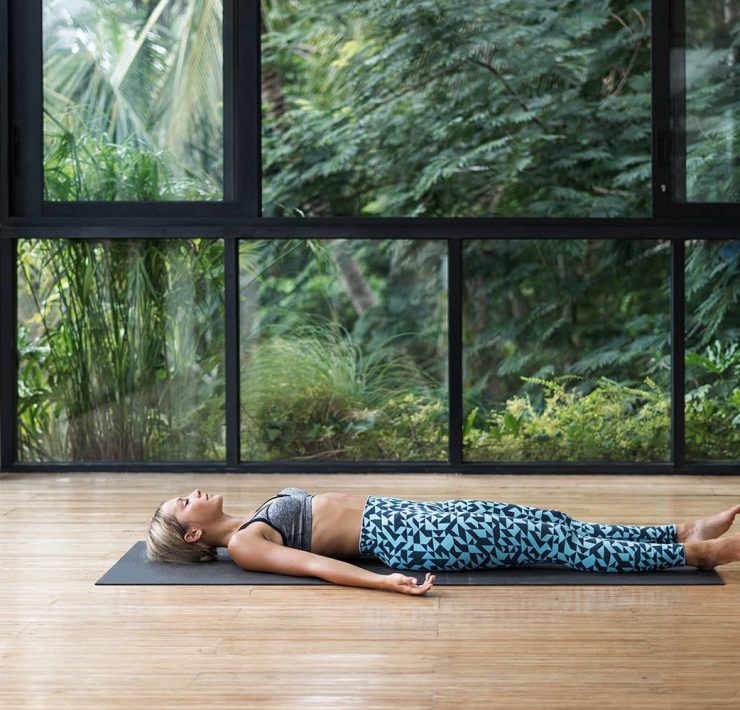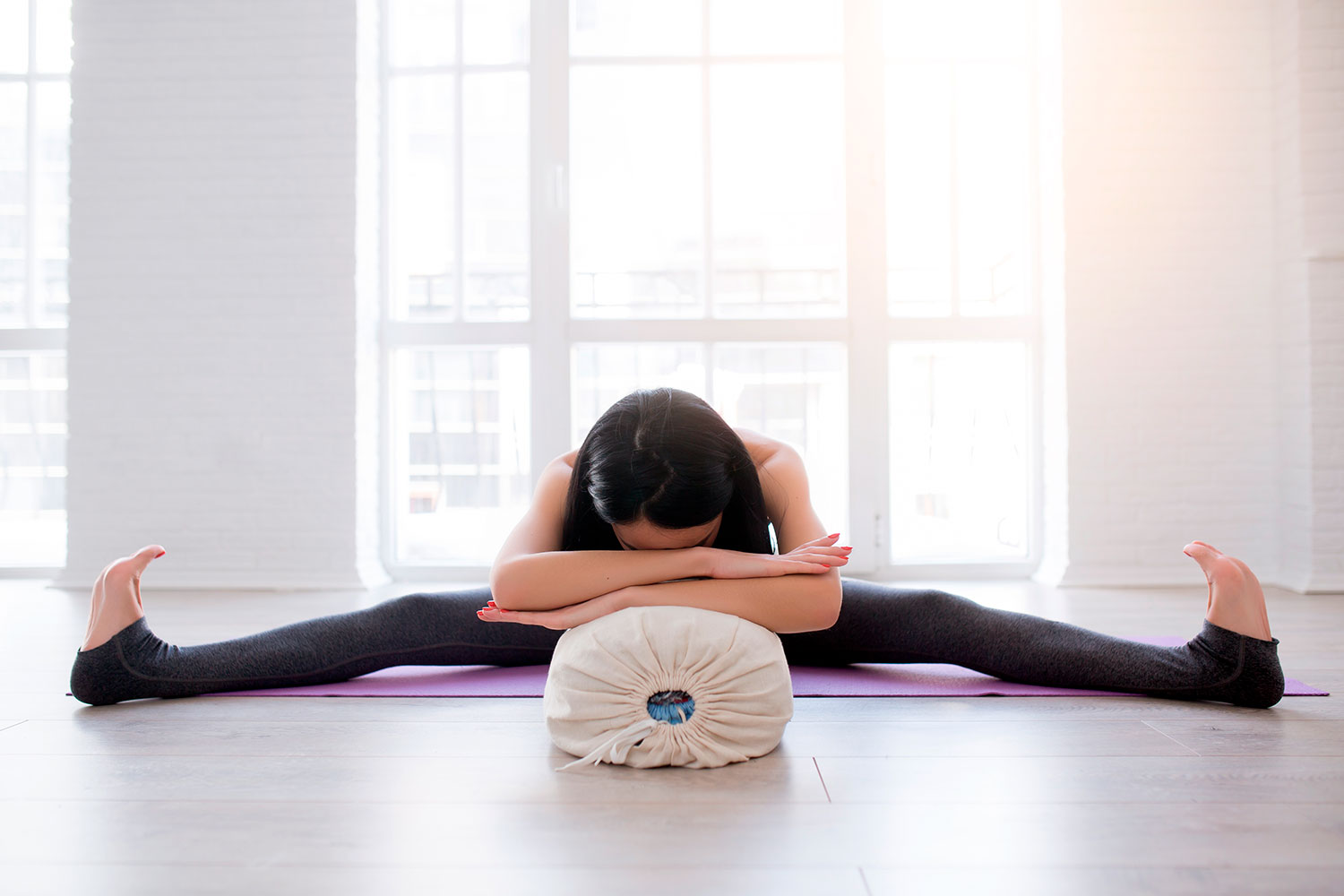
Having been a teacher’s assistant at over 50 yoga teacher…
Each night, an estimated 20 million people in the United States struggle to fall asleep—restless sleep, not enough sleep, or the inability to even fall asleep (insomnia). Insomnia refers to a constant, ongoing inability to fall asleep at a regular time. People who suffer from insomnia may have problems falling asleep, feel irritable, feel anxious about sleep quality, and may get one good night’s sleep for several nights of difficult sleep.
Without sufficient sleep, your body can suffer from physical and emotional side effects. Insomnia can be triggered by a mixture of lifestyle and medical conditions. For some people, insomnia is caused by psychological stresses, like: anxiety, depression, stress, or emotional trauma. The inability to fall asleep can also be lifestyle-related: diet, medications, family history of insomnia, poor sleep hygiene, or poor sleep quality when you finally do fall asleep. Because of this struggle, nearly 4% of adults turn to prescription-strength sleeping aids to fall asleep.
Not getting enough sleep can cause serious health risks. Poor sleep quality is associated with increased risk in heart disease, diabetes, stroke, and hypertension, along with depression, anxiety, and poor cognitive function.
Using a yoga routine for better sleep: Most root causes of insomnia are inability to relax and quiet the mind. By creating a nightly yoga routine, you can cultivate relaxation at set nightly times. Researchers at Harvard Medical School found that a nightly yoga practice improved patients’:
- Sleep quality
- Sleep efficiency
- And total time asleep
While also helping the participants fall asleep faster and with fewer sleep interruptions during the night.
A nightly yoga practice can calm the central nervous system (CNS), easing anxiety and stress. A nightly yoga practice also helps lower blood pressure, reduces muscular inflammation, and promotes physical relaxation.
Restorative yoga is a type of yoga that should be used in this kind of practice. It encourages the use of props (pillows, blocks, towels, or walls) to assist in achieving full relaxation and rest. A nightly restorative practice incorporates lots of gentle twists (to detoxify), seated forward folds (to lower blood pressure), gentle backbends (calm the nervous system), and heart-openers (open, relax, and restore emotional well-being). When paired with meditation and breathing exercises, a restorative practice can help calm the mind and prepare the body for bed.
How to set up a nightly yoga routine
To treat insomnia, set up a nightly yoga routine. This should be part of a regular practice: make sure you do this every night, around the same time, before bed.
Practice in a dark or calming space. The lights don’t need to be off, but try to dim the lights if possible. External light cues, electronics, and bright lights in your sleeping environment can cause too much stimulation before bed, and can amplify insomnia.
Turn off your electronics, and instead try lighting your space with candles. Some practitioners recommend using aromatherapy and quiet, relaxing music during this practice time. This can promote mental relaxation and prepare your mind for bed, as much as your body.
Using Props: Feel free to use props such as: pillows, towels, cushions, or blankets to support these poses and promote relaxation.
During the practice, focus on rhythmic, deep breathing. Try to incorporate these eight poses:
8 Poses to Combat Insomnia
Salamba Balanasana — Child’s Pose

How it works to promote sleep: This is a true resting pose that promotes relaxation and calmness, while relieving tension in the back, shoulders, neck, and hips.
Try it: Sit up comfortably on your heels, then roll your torso forward, bringing your head to rest on the floor or a pillow in front of you. Lower your chest to the floor, focusing on stretching your arms and feeling the weight of your shoulders relax. Hold the pose for 3-5 minutes, focusing on deep breaths and softness.
Bonus: Extended puppy pose.
Supta Matsyendrasana — Supine Twist Pose

How it works to promote sleep: Gentle spinal twists are used to help detox and cleanse the organs. This pose alleviates bloating and gas while improving circulation.
Try it: Lie on your back with your knees bent, feet flat on the floor. Gently roll your knees to the right side, keeping your shoulders pressed down toward the ground. Turn your head to the left, and press your knees with your right hand to deepen this stretch. Repeat on the other side.
Viparita Karani — Legs Up The Wall Pose

How it works to promote sleep: This restorative pose is an essential stress reliever, and is a passive inversion that eases tension headaches, anxiety, and insomnia. When held for at least 5 minutes (10-15 is preferred), this pose gently stretches the lower back, torso, legs, and shoulders, while easing tired, achy feet. The mild inversion relieves anxiety and calms the mind before bed.
Try it: For this pose, you will need a wall as your guide. Start in a seated position, 5-6 inches away from the wall. Swing your legs up onto the wall, with your shoulders and head resting on the floor. If possible, scoot your sit bones against the wall, so that your legs are in a 90-degree angle with your hips. (For tight hamstrings, keep your sit bones a few inches away from the wall, working closer as you gain flexibility.) Keep your chest long, and allow your feet to press into the wall. Keep your legs firm enough to hold them in place, but allow them to relax. Breathe deeply as gravity pulls the weight from your legs toward the floor. Hold for 5-15 minutes.
Marjaryasana — Cat/Cow Pose

How it works to promote sleep: Together, these two poses relieve tension in the spine, shoulders, and low back. They also stretch the back and open the chest, encouraging a deep breath and mental relaxation.
Try it: Start on your hands and knees, with your wrists directly under your shoulders, knees are under your hips, and your legs hips’-width apart. Begin by moving into Cow Pose: inhale as you drop your belly toward your mat, lifting your head and chest, and gazing up to the ceiling. Try not to pinch your back, but let it stretch as you drop your belly toward the floor.
Then, exhale as you draw your belly to your spine, rounding your back toward the ceiling. Think of a cat stretching its back: rounding the upper back, and releasing the crown of your head toward the floor. Inhale as you move back into Cow pose, and repeat this sequence 5-20 times.
Adho Mukha Sukhasana — Easy Forward Bend Pose

How it works to promote sleep: The basic seated Sukhasana translates to easy, comfortable, or joyful pose. Adding a simple forward fold makes this calming, soothing, and restorative, by stretching the back, shoulders, hips, knees, and ankles. The forward fold reduces anxiety, perfect for a nightly routine.
Try it: Start in Easy Pose (Sukhasana), sitting cross-legged on the floor with a tall, but relaxed torso. With an inhale, reach both arms up overhead. Exhale and slowly bow forward, resting your arms, hands, and forehead on the mat. If your forehead can’t touch the mat, try resting your head on your hands or a pillow, for added support. If your hips are too tight, try sitting on a blanket or bolster block. Hold for up to 5 minutes.
Halasana — Plow Pose

How it works to promote sleep: Inversions stimulate the abdominal organs and nervous systems, while reducing stress and fatigue. This pose calms the brain, stimulates the abdominal organs and thyroid gland, while providing a deep stretch in the shoulders, and spine.
Try it: Begin lying flat on the mat. Exhale as you press your arms into the floor as you push your feet away from the floor, gently drawing the thighs into your front torso. Support your pelvis, as you would in supported shoulder-stand, as you slowly lower your toes to the floor beyond your head. Keep your torso perpendicular to the floor, legs extended. You can support your pelvis or stretch the arms behind you on the floor. For those new to shoulder-stands, you can rest your shoulders on a towel or blanket. Hold for 1-5 minutess.
Supta Baddha Konasana — Reclining Butterfly (Bound Angle) Pose

How it works to promote sleep: Because we hold so much of our daily stress in our hips, this pose is a great way to externally rotate the hips and release that tension. This stretches the hips and spine, relaxes the shoulders, and eases the mind. A blanket or prop can be used to make this a gentle heart-opener, as well.
Try it: Begin lying flat on the mat. Gently bring the soles of your feet together, opening your knees to the sides. Place your arms on the floor at your sides, palms facing up. Stay here for up to 10 minutes, allowing gravity to relax the hips and draw them to the floor. You can also begin in a seated position, with a blanket behind you. Then, lower your torso gently to the floor and draw your feet together. Keep your hands at your sides, palms facing up.
Savasana — Corpse Pose

How it works to promote sleep: This pose is often used to conclude yoga classes because it is both restorative and meditative. For this reason, it is ideal in a bedtime ritual for better sleep. Corpse pose lowers blood pressure and heart rate, stretches the limbs, and aligns the spine. This pose also alleviates muscle tension, promoting relaxation before bed.
Try it: Lie on your back with your legs straight and arms out at your sides, palms facing up. Working from your toes up to the crown of your head, focus on releasing tension in every part of your body. Let your breath occur naturally as you let the weight of your body fall to the floor, consciously relaxing your legs, arms, chest, and face.
Breathing & Meditation

Because our breath is so closely tied to our emotions and health, try including guided breathing exercises during your nightly routine. This calms the mind, steadies the heart, and promotes relaxation.
– Left-nostril breathing, known as Sura Bhedana, or “moon-piercing breath,” is a technique in hatha yoga to calm the brain and body. Take 3-5 breaths to promote relaxation.
– Meditation: Try incorporating a guided meditation into your nightly practice.
Bonus
Try these Vinyasa flows 10-30 minutes before bed. These are sequences designed to help calm the mind and relax for a restful night’s sleep:
- 10-Minute Nighttime Yoga with Brett Larkin
- 20-Minute Yoga for Bedtime with Adriene
- Bedtime Yoga with Cole Chance
- Yoga to Help You Sleep with Catalina Moraga
- Bedtime Yoga to Calm Your Nerves with Tim Senesi
What's Your Reaction?
Having been a teacher’s assistant at over 50 yoga teacher trainings worldwide, Rebecca Rebecca has a firm grasp on the fine art of yoga and meditation. In her work, she carefully reflects on a vast expanse of knowledge to help others find peace in both body and mind.






